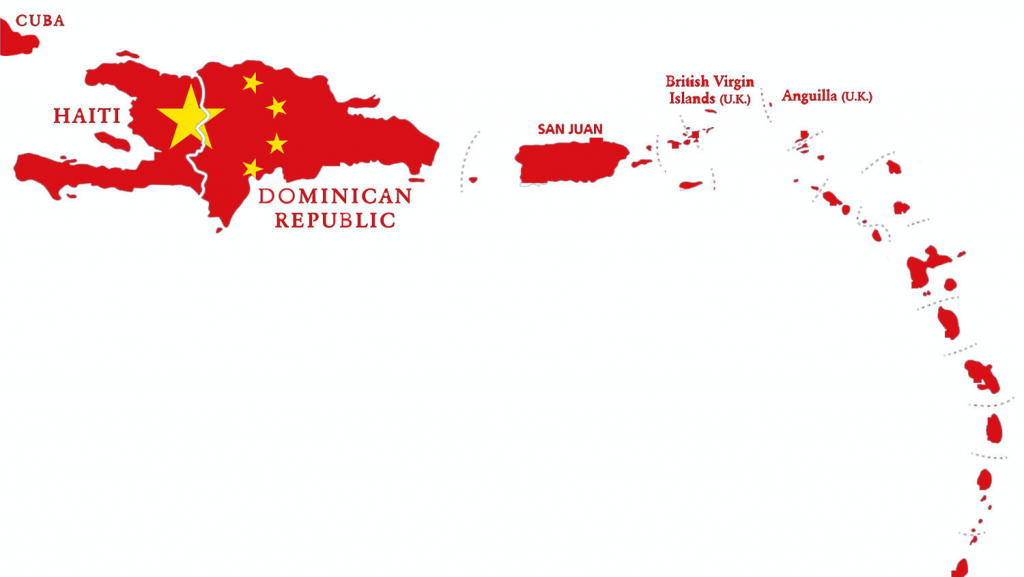The problem of toxic debt levels in the Caribbean is neither new nor particularly surprising, given the established trends in government spending even amidst poor economic performance and dismal growth prospects. However, the recent and ongoing involvement of the International Monetary Fund (IMF) in the region’s economic affairs and the familiar championing of spending cuts and austerity are cause for concern, especially with the Fund’s history of botched economic experiments in Latin America (including Argentina) , Asia and now Greece. While huge public spending cuts seem to be a band-aid for the economic hemorrhaging, they are inadequate and short sighted solutions to the much bigger problem of creating (and supporting) economic growth.
The basics of budget deficits, and why they keep happening
Simply put, deficits exist because governments spend more than they receive through taxation in a given budget year.* This spending is often wasteful: used to maintain or increase core political support; lost through white elephant (often infrastructural) projects with no return on investment; or pumped into social spending with no positive social gain. In a recessionary period, however, the effect of budget deficits is amplified by contractions in growth and employment and corresponding reductions in tax revenue. There is pressure to increase social spending, which cannot realistically be done in cash-strapped economies without significantly increasing public debt.
The historical colonial narrative is always at work in contemporary political economy, and public debt is no exception. The model of centralized institutions and dependency present in the plantation system is still present in the postcolonial Westminster model of government. The political systems in the region are characterized by highly centralized governance models and a highly dependent citizenry. While this can be said of many governance models, what sets CARICOM apart is that the region’s average national GDP stands at just over US$ 5 billion (just US$2 billion if the highest GDPs are removed!).
These figures are important for a number of reasons. First, and most importantly, income disparity has created a gulf between the rich and poor in Caribbean countries, and poor people turn to the government for support. While social infrastructure is designed to provide basic support for the poor, the majority of Caribbean economies are simply not large enough to support the volume of state dependents.
Second, the Caribbean middle class is too weak (and laden with personal debt) to support spending, drive economic growth and increase government revenue. This is important because the rich are more likely to save than spend their wealth, and are not usually consumption-driven.[i] The absence of a strong consumer group reduces non-essential spending and reduces the volume of taxes received by the government. Additionally, the absence of small and medium enterprises (SMEs)weakens the capacity to draw from the pool of unskilled and semi-skilled labour or to spread wealth (through employment) at the community level.
Finally, given obvious budgetary constraints and a predisposition to borrowing, governments simply overreach. The social democratic models that pervade Caribbean politics demand subsidies on non-essential and often unhealthy imported food, oil, energy and public utilities, transportation, healthcare and tertiary education. While all of the aforementioned are no doubt a part of Caribbean life, it is near impossible to sustain the sheer volume of public funding that is required to maintain them. These sectors are essentially closed and anti-competitive, which means that governments are tasked with acting as the “invisible hand”.**
The presence of these co-dependent dynamics stresses existing social safety nets, keeps low wage earners dependent, and encourages wasteful spending to attract political support.
Why austerity won’t work
Given the current state of affairs and rising fears concerning economic sustainability, the IMF’s slash and burn techniques seem like a viable option to some countries, with Barbados recently committing to slash its budget by BBD$143 million. The crisis in the Caribbean is not one of debt insomuch as it is a crisis of growth—what austerity and structural adjustment have failed (and continue to fail) to do is to address the issue of economic growth and output, which is also the source of their failures as economic policies.
The traditional methods of reducing debt as a share of GDP have been to cut government spending, increase taxation, or find some balance between the two. In a depressed economy, however, austerity measures worsen long-term budget sustainability and shrink the economy, effectively undermining the recovery effort. Since overspending is a function of poor financial management, spending cuts are usually not employed to the benefit of the economy or the citizens. While cutting the budget by X million dollars seems like a good idea, the real savings are reduced significantly by the reduction in future GDP. This is because the savings from budget cuts are undermined by the loss of output and the corresponding contraction of tax revenues. Furthermore, spending cuts do not necessarily reduce spending, as any newfound “wiggle room” is soon lost to new economic or social demands. An increase in taxes on consumption also serves to decrease growth by decreasing demand, effectively lessening the impact of tax hikes on revenue generation. Furthermore, the external focus of some of our economies (attracting demand for services) means that domestic economic factors cannot drive growth in a manner that will increase GDP and government revenue.
The social effects of austerity are especially brutal, and do not usually correspond with an increase in economic performance or growth. Unemployment inevitably increases, reducing the spending power of a significant part of the society, and reducing the potential for increased tax receipts. Young people are affected twofold—young people are less likely to find employment in a depressed economy, and young people are most affected if they are dependents of people who have been removed from the active workforce. Women are also affected disproportionately, as they outnumber men in the lower employment categories and are laid off in larger numbers. If we consider the Greek example, homelessness, suicide, public health crises (200% increase in HIV infections), and unemployment are just a few negative consequences of austerity in order to satisfy external debt requirements.
Where to from here? Towards a new discussion
It is an undeniable fact that governments are guilty of wasteful and counterproductive spending the world over, and the Caribbean is no different. While government spending should no doubt decrease significantly, perhaps it is It is time for a new discussion on the sustainability and longevity of debt reduction strategies in order to move from delaying economic crises to solving real economic problems. Currently, there are quite a few options available to Caribbean countries, some less desirable (and possible) than others:
Increase taxes and cut spending to create a surplus. This is the current strategy being employed in Barbados, and there are fears that other heavily indebted Caribbean countries will follow suit. It is indisputable that the public service has ballooned into an employment haven, and unnecessary spending on wages must no doubt be cut. However, as should become evident shortly, job cuts in the public service will spur similar cuts in the private sector, which will only serve to further strain the economy and reduce the tax base. As has been elaborated above, spending cuts don’t really reduce spending, and increasing taxes only serves to decrease demand, further injuring already depressed economies.
Cut parasitic spending. Instead of cutting core social spending, there should be a focus on reducing instances of parasitic rent seeking activities. By eliminating unnecessary (and very expensive) politically motivated spending, it is possible to drastically reduce the budget deficit without the negative economic effects of austerity.
Currency devaluation Depending on the currency in which the external debts are held, it is possible to devalue the dollar and reduce the value of the debt. While this is not necessarily a desirable outcome, it has been successfully implemented before.[ii]
Default on the debt. As Iceland has proven, there is life after defaulting on debt. Economic hardships will be a prominent feature of Caribbean life for the forseeable future—it is up to governments to determine the way forward. By defaulting on the debt, the burden of repayment is cast squarely at the creditors, providing significant financial freedom for the [formerly] indebted country. The downside is that it will take a long time to convince creditors that the country has regained its reputation as a safe borrower.
Grow out of debt. Perhaps the most difficult to execute and most unlikely, export-led growth is still a way out. Contrary to popular opinion, slow growth is not a consequence of debt, it is a causal factor. If Caribbean countries could turn their focus to exporting high value primary or finished goods to external markets, there would be possibilities to increase growth instead of reducing debt, which would have the effect of increasing government revenues (without increasing taxes) and reducing the debt-to-GDP ratio. While it is near impossible to move forward with financial support to SMEs at this point, it is crucial that governments reduce barriers for SMEs and work with lending institutions (read: development banks) and domestic and regional investors (read: resource-rich CARICOM countries) toincrease funding opportunities.
Create intra-regional growth. Labour and capital sharing has been a Caribbean dream since the Federation of the West Indies. The Caribbean Single Market and Economy (CSME) has consistently failed to produce the open transfer of resources throughout the region, which is a critical success factor for economic and social development in CARICOM. By creating inter-island production chains and establishing intra-regional transportation routes, Caribbean countries could create “regional” products that employ workers across CARICOM, increase demand and spread wealth more evenly between countries. However, that is beyond wishful thinking at this point.
The unique (and precarious) position in which we find ourselves demands economic restructuring, a return to exports and SMEs as the loci of growth, and serious financial consolidation. Governments must reevaluate their role in the economy, and must be willing to defer to (and support) the private sector. However, there should be no bullying or hurried decision-making as countries try to find sure footing. Instead, key domestic stakeholders should find a “suitable” pace of recovery, which takes into account current economic and social realities and works to stimulate demand in the long run in order to sustain growth.
*There is also a trend toward the enlargement of government benefits beyond the willingness or ability of taxpayers. This includes salary increases at all levels of the public service and the expansion of non-essential high-level allowances.
**Monopolies eliminate the need for competition, which means that prices of food, transportation or tertiary education are fixed based on large profit margins instead of pressure to compete. In order to make these goods and services affordable, governments must subsidize them. These subsidies are available to all citizens instead of the poor and needy, which creates inefficiencies and increases the proportion of spending without capital returns.
[i] http://www.economist.com/blogs/democracyinamerica/2010/12/tax_cuts
[ii] http://www.slate.com/blogs/moneybox/2012/05/15/the_secret_to_sweden_s_success.html








